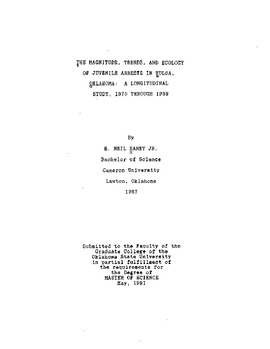| dc.description.abstract | I worked for two years as a volunteer juvenile counselor for the Comanche County Juvenile Bureau in Lawton, Oklahoma while attending Cameron University for my undergraduate degree. During that time I worked with teenage prostitutes, drug dealers, boys accused of rape, runaways, youths who just skipped school and many other youths. Each and every youth was different, but all were searching for something. I saw boys and girls who desperately wanted to be loved, and who were willing to go to any lengths to find it. The most difficult part for me was seeing these youngsters being hardened and turning cold towards the world around them and to life itself. Prior to this experience I assumed that juvenile delinquency was always something done by "bad" kids. I thought only the poor, abused and neglected would commit illegal acts. Children who had nothing were the ones who would steal, commit murder and harm the lives and property of others. I had the notion that most of our American society has; that is, the "bad people" are the source of the "bad behavior" in society. This view changed during the spring of 1987. I was setting around a campfire with those young adults who were there with me because of the things they had done. I was the counselor trying to help a group of youths sort out their lives, trying to help them find some meaning, some hope for the future, and some purpose for their lives right then. What happened was a change in me. Most of the youths there that night never came back through the Juvenile Bureau. Others we continued to see on a regular basis. But I realized for the first time that juvenile delinquency is much more than "bad kids committing crimes." What I saw in those young people was a reflection of myself; and I didn't consider my self a "bad person." I was no different. I committed some of the same crimes they did while I was growing up, but was not detected, apprehended, or became officially identified as a delinquent. From this interest I entered the graduate program in Sociology and selected as my thesis topic, "The Magnitude, Trends, and Ecology of Juvenile Arrests in Tulsa, Oklahoma." This study has been an attempt to investigate the magnitudes, trends, and ecology of Juvenile Delinquency in Tulsa, Oklahoma from 1970 through 1989. This project has examined the theoretical concept of high delinquency areas; it has identified clusters and patterns of juvenile arrests; and an analysis of the trends and magnitude of juvenile arrests has been done. | |
